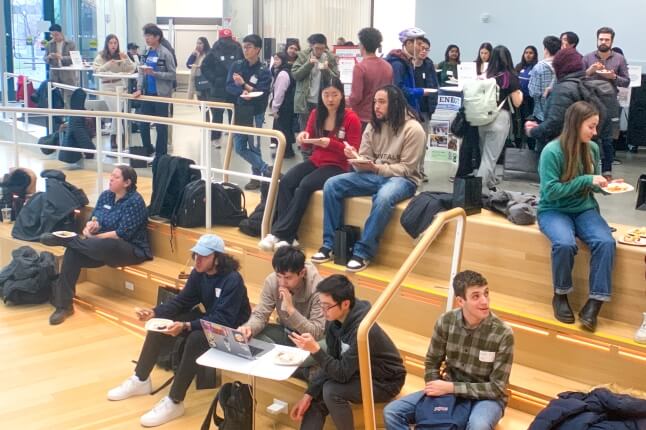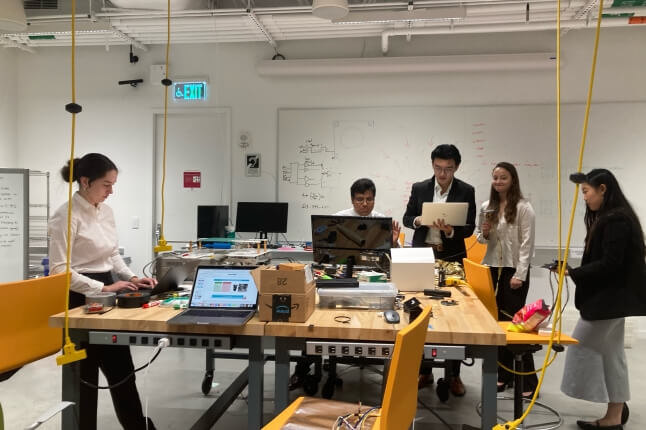News
Image of a vacuum tube, one of the key technological advances that has driven the U.S. economy. (Image courtesy of Flickr user, Kurt Faler.)
April 14, 2011
by Cherry A. Murray and Andrew R. Garman '80
Harvard Crimson
From vacuum tubes to transistors to semiconductors, from the telegraph to smart phones, technological innovation has been essential to America’s economic growth and global competitiveness. And behind every advance inevitably lies an engineer.
China, Korea, and India understand this well, graduating enormous numbers of new engineers each year. The debate about the need to train and produce more engineers to maintain U.S. competitiveness, however, has obscured an important issue. We don’t just need more engineers; we need a different kind of engineer. What we need are engineers who lead, driving not just inventions, but institutions.
The greatest challenges our country and the world face—energy, information access, climate change, sustainability, healthcare, economic development and growth, even financial reform—require the technical knowledge and analytical skills of people trained in the engineering sciences.
Consider the federal government. Of the 23 cabinet members, only the Secretary of Energy and the Administrator of the Environmental Protection Agency have engineering or natural science backgrounds. Even they are exceptions. Of the 22 former heads of the Department of Energy and Environmental Protection Agency, only three had engineering training. The majority were lawyers.
In Congress, out of 535 members, six are engineers and one is a physicist. (All told, there are more accountants, musicians, and talk show hosts.) By contrast, eight of the nine members of the Chinese Politburo, the highest-ranking officials in China, have engineering degrees.
Engineers have not fared much better in the private sector. While many engineers have founded startups, they rarely rise to the top of them or lead large organizations. A recent Spencer Stuart survey showed that of the CEOs in the S&P 500 companies, only 10 percent worked within the engineering function in their career. Forty-one percent of the CEOs worked in sales or marketing, and 26 percent in finance. None of the CEOs of Boeing, Cisco, GE, Hewlett Packard, IBM, Intel, Oracle, or United Technologies has a degree in engineering or the natural sciences.
Those who rise to the top of organizations do so in large part because of interpersonal and communication skills, tolerance for real-world ambiguity, and a holistic understanding of organizational needs. Business and law schools tend to attract people with these characteristics and then reinforce them by the nature of their programs and culture.
To provide a foundation for engineering leadership, engineering schools should take a lesson from law and business schools. We aspire to create a new generation of engineers who have deep technical training in a domain, and the breadth of knowledge and character to effectively collaborate with and lead others.
Of course, it takes a great deal of classroom and lab time to be prepared to solve complex technical challenges. The tolerance for error is low: Airplanes must fly, bridges must stand, and power plants must run.
Without aiming for a breadth of knowledge beyond just the technical though, universities risk educating engineers lacking the qualities required for corporate and government leadership. Thankfully, the philosophy of “engineering as a liberal art”—in which engineering discipline is part of a liberal arts curriculum, and students learn by working in multidisciplinary teams to solve real-world problems—is catching on.
For example, at Harvard College, a recent engineering graduate from Sierra-Leone, David Sengeh ’10, worked with researchers on refining an inhalable TB vaccine. Through NGOs he helped distribute mosquito nets in Africa. “It’s not enough just to be a good scientist,” he’s says. “You have to bring science to the smallest village to produce real social impact.”
Change is needed at the high school level as well. We applaud grassroots activities like the USA Science and Engineering Festival and efforts sponsored by the National Academy of Engineering. But schools must rethink what they teach. They have time-tested programs in chemistry, biology, physics and math, but why are there no engineering or computer science options?
Moreover, where are the opportunities for teenagers to build, break, and fix things? And how often are young students given the chance to connect what they’re learning in science class to ethics and policy and to creation of value in society?
The big challenges we face are too systemically and technologically complex—the Deepwater Horizon oil spill in the Gulf of Mexico and the earthquake and tsunami in Japan are just two examples—to leave engineers out of leadership roles.
We need to bring a deeper level of analytical thinking and a new set of social and leadership skills to their education. By doing so, engineers will gain a well-deserved seat at the grown-ups table.
###
Cherry A. Murray, is the dean of the Harvard School of Engineering and Applied Sciences. Andrew R. Garman ’80 is managing partner at New Venture Partners.
Topics: Academics
Cutting-edge science delivered direct to your inbox.
Join the Harvard SEAS mailing list.


